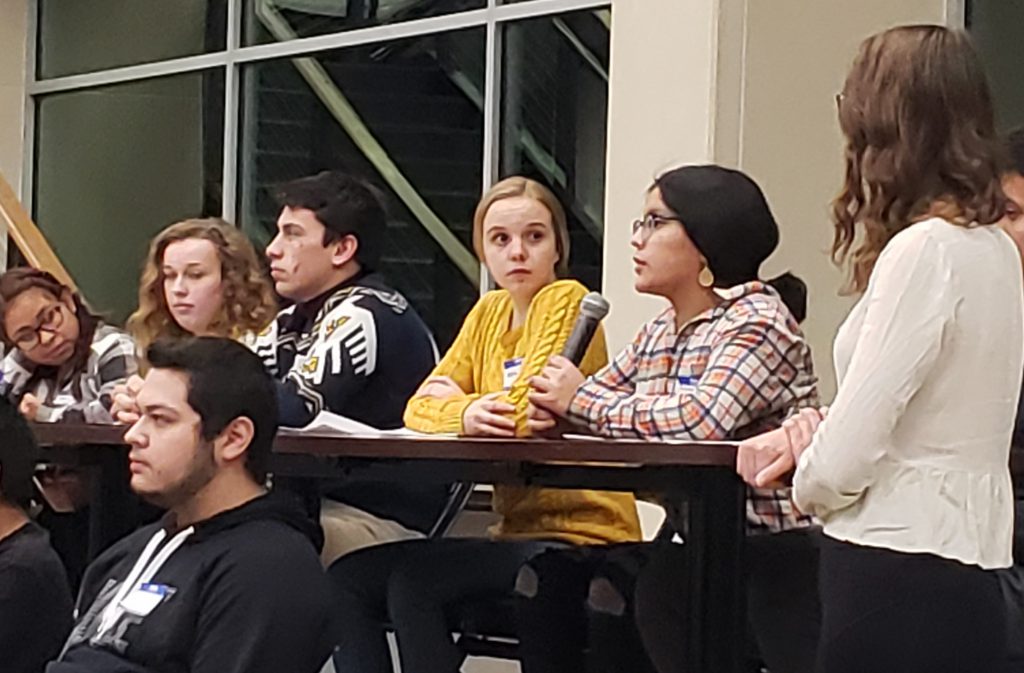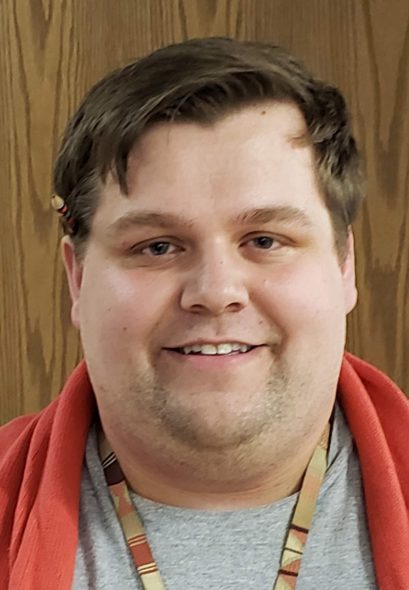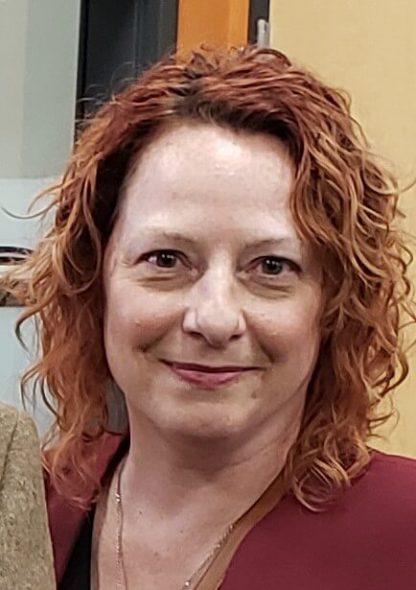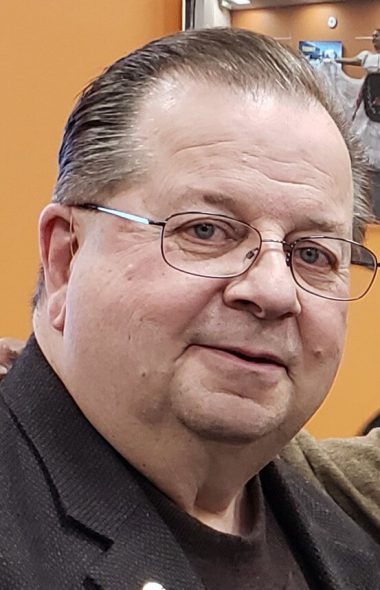One Year After Baraboo’s Nazi Salute
Residents, school district, assess what they’ve learned since notorious prom photo brought town national attention.

Baraboo High School students took part in a panel discussion on diversity at Baraboo High School in December 2019. Photo by Erik Gunn/Wisconsin Examiner.
It was the pre-prom picture that went around the world.
It was supposed to be a lighthearted, celebratory snapshot. It turned into anything but that: A picture of teenage boys, the majority of them with their arms stuck out in the air, parroting a Nazi salute to the camera.
Many were grinning — smiles that sparked horror and disgust in those who saw it when the photograph surfaced months later. A few in the photo seemed to look away, keeping their arms down.
More than a year later, that moment frozen in time — a moment that curdled a typically benign annual ritual into an ugly display of white supremacy — still reverberates through the community of Baraboo and the Baraboo School District.
The picture became public in November 2018, six months after it was taken, when it showed up anonymously on Twitter. “I don’t think the community reaction was monolithic by any means,” says Alex Paulson, a Baraboo elementary and middle-school school teacher active in the community’s response to the incident. But across the board, he adds, “It was emotional, visceral and raw.”
There was denial: local residents who minimized what had taken place when the picture was taken.
And there was outright hostility: anonymous antisemitic and racist flyers that surfaced periodically after the photo came to light.
Baraboo Police Chief Mark Schauf tells the Wisconsin Examiner that his department has investigated a handful of incidents — from posting of antisemitic flyers to, for a brief time, a scurrilous video put on the internet mocking teachers at the school with antisemitic and anti-LGBT language — that raised concerns and frightened some in the community.
No suspects have been identified, and none of the incidents have, so far, included direct threats to individuals that would put them outside the bounds of First Amendment protection for free speech, Schauf says.
But others in Baraboo refused to turn their backs on the ugly image. Instead, with support from the city’s mayor, they have embarked on an ongoing campaign of teaching and learning — a continuing effort to bring out the best potential for the future in this city of 12,000 people.
“It cultivated a lot of urgency in the community,” Paulson says.
‘We’re going to have a really bad day’
Baraboo School Superintendent Lori Mueller found out about the picture when the rest of the world did. Originally posted on Nov. 11, 2018, on an anonymous Twitter account, the image was amplified by a journalist who tweeted the image the next day along with claims of widespread racist bullying at the school.
“We need to huddle up,” Mueller says she told school district administrators that morning. “We’re going to have a really bad day.”
Social media posts in the next few hours kindled a wildfire of accusations online. Some 4,000 email messages poured into the school district — many brimming with condemnation and some containing death threats. They blamed the school district and its personnel for the picture. National media coverage swiftly followed.
“It was my role to serve as a lightning rod as school superintendent,” recalls Mueller, speaking a little more than a year later, during a panel discussion at Madison Area Technical College about the events.
After a school investigation, assisted by the Baraboo Police Department, Mueller wrote a letter to parents in the school district announcing there would be no punishment for the people involved with the photo. She cited the First Amendment free-speech rights of the boys, a position supported by two law professors interviewed by The Atlantic.
What happened?
There were conflicting stories of how the picture came to be made.
It was shot on the steps of the Baraboo County courthouse. The boys were high school juniors, and the picture was taken on the night of their junior prom.
The picture with the Nazi gesture was taken at the end of the photo session. Some who took part claimed the photographer had encouraged the gesture. He has emphatically denied that in published reports.
Another account was that the photographer had simply asked students to wave as if to their parents. It was the students who turned that into the Nazi salute — deliberately mocking the photographer.
That was the explanation that a student who took part gave to BuzzFeed News in a story published five months after the controversy broke. Mueller mentioned it in the Madison College panel discussion. Other community residents who have spoken more recently with the Wisconsin Examiner confirm that they’ve heard that explanation, too, and find it plausible.
“I don’t know if it was the students’ idea. I’m pretty sure that it was,” says Amy DeLong, a local family practice physician and Ho-Chunk Nation member who practices at a tribal clinic in Baraboo. “I think the photographer was pretty clueless about the whole thing.”
“I was sick,” says Mara Doughty, who is Jewish, recalling when she first learned of the picture.
Equally troubling was the reaction from some residents who denied the gesture’s meaning.
“I heard a lot of people saying it wasn’t what it was looking like,” says Doughty. But subsequent coverage and reporting on the incident convinced her that it was exactly what it had looked like.
Of those still in denial, “I think people were as shocked as I was,” Doughty says. “But I think their first thought was, ‘I know these kids.’ Nobody wants to be seen as a Nazi, and [so], ‘Those kids aren’t Nazis’ — I think that was the mindset.”
Kristin White Eagle, a local Ho-Chunk leader whose children attend Baraboo High School, says even before the photo surfaced she had seen the school working to promote diversity and respect.
So when the picture turned up, she says her first thought was, “How could this happen?” She continues, “How in this day and age — with so much activity and class time to understand different people and cultures — could something so hurtful to people have occurred?”
Difficult conversations
In the aftermath of the episode, the picture of the community that emerged was complex and contradictory.
While the predominant gesture in the pictures does clearly mimic the Nazi salute, Mueller told the Madison College audience that the investigation did not find evidence of conscious, organized “networked hate.”
DeLong, who has two daughters in the high school, believes that careless ignorance was behind the gestures that the students made in the picture. “I don’t think they knew the full meaning of it,” she says. “They were just being stupid and mindless.”
But that doesn’t let the community off the hook, in her eyes. Especially where Jewish families, Native Americans, other people of color and other marginalized groups in the school are concerned, the incident served “to let people know that there’s still a lot of racism in our community.”
The city administration and the school district, along with members of the community, embarked on a series of community-wide events to address what had happened.
First there was a gathering at which a local rabbi addressed the impact of the photo and Baraboo Mayor Mike Palm read a proclamation disavowing hate and embracing diversity.
A subsequent gathering included small group conversations in which people discussed their own experiences and feelings about how welcoming the community was — or wasn’t.
Palm says he began asking people he knew of different ethnic or religious identities about how they felt in their hometown. Some of the answers were troubling, he admits.
“They did feel intimidated. They did feel marginalized,” Palm says. “What I learned then was, it wasn’t a photo. It was a larger community issue.”
Taking action
For the next phase of the community response, organizers enlisted the Madison-based organization We Are Many United Against Hate, founded by Middleton resident Masood Akhtar, to help.
Akhtar arranged a visit by Milwaukee ex-skinhead Arno Michaelis and his friend and collaborator, Pardeep Kaleka, whose father was among those killed in the August 5, 2012, mass shooting at the Sikh temple in Oak Creek. The two conduct presentations in schools and other venues on resisting racist extremism and have consulted with communities around the country confronting extremist violence.
Mueller says that Michaelis reinforced her conviction that heavy-handed punishment of the boys involved in the picture was the wrong way to deal with their actions, however reprehensible.
“We were going to condemn the photo and we were going to defend the kids,” she says.
During his visit, Michaelis had stressed the importance of compassion for everyone involved. Mueller paraphrases him this way: “I know people want to punish these individuals, but the minute you turn your back on them, you’re going to create a reason for them to be angry.”
Her recurring message to those who had taken part in the photo, she says, was, “How can you restore the relationship that you burned?”
Expanding knowledge
In the months that followed, the senior class — which included the students who had posed for the picture — was sent on a field trip to the Illinois Holocaust Museum in Skokie, Ill. A longer visit was arranged to Baraboo by a traveling Holocaust memorial sponsored by the Auschwitz-Birkenau State Museum in Poland.
In mid-December, organizers convened another gathering at the school, led by teacher Alex Paulson and Marcy Huffaker, a Jewish 20-year resident of the community who emerged early as a leader in organizing the community’s response.
“The factors [behind it] and the incident are not unique to Baraboo,” Paulson says. “This could have happened in any community. It’s something that all communities need to work on.”
And “working on” does not mean simply rehashing what happened on a May afternoon nearly two years ago.
“What we’re moving on to is really focusing on systemic change,” Paulson says. “Fostering a grass roots investment in creating a community that’s really welcoming to all people coming to Baraboo.”
The December 2019 school gathering included a presentation in which a student panel — with members who were white, African American, Latino and Native American — spoke about what they appreciated about their community. They addressed what they hoped to see to bring about a stronger, more diverse and more unified community as well.
“I would like to see more voices heard,” said one of the teens. Said another: “It would be really nice to see people step into others’ shoes, and get out of their own bubble.” And from a third, on what fellow teens should do in the face of stereotyping and name-calling: “Take action when you hear something — don’t just close your ears.”
How far does it reach?
Although the December meeting’s attendance was smaller than some past gatherings, some who were there were willing to make allowances — for the cold weather, the pre-holiday hectic rush or even a confidence that the work has permeated more widely in the community.
“The folks that aren’t here — they’re at a comfort level with the way things are going,” says Kristin White Eagle. “I think it’s infiltrated through the community. People feel a part of it.”
Amy DeLong says she’s seen some increased interest in promoting diversity, including classes teaching the Ho-Chunk language, although she’s not sure whether those came about directly from the photo incident or may have been in the works even before that surfaced. “I never had that opportunity,” she says. “They’re making an effort.”
She and others would like to see the school district do more to recruit teachers of color. Her children, now high school juniors, tell her they still encounter racist talk and attitudes among students in the classrooms and hallways.
As Palm said at the Madison College panel, “This type of program and project does not end.”
DeLong agrees.
“A lot of people will still blow it off and say, ‘What’s the big deal,’ which is a little disconcerting,” she says. “Others really look at it as a lesson. This is an opportunity for us to do better, to teach kids to be open-minded and appreciate differences.”
An opportunity that mustn’t end, she adds. “It can’t be that we’re going to do this for the next one year. It’s got to be ongoing.”
Reprinted with permission of Wisconsin Examiner.
























